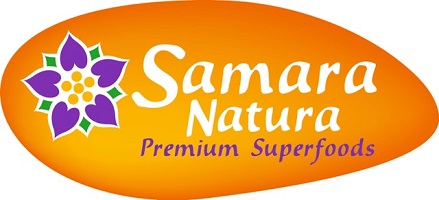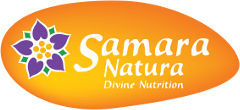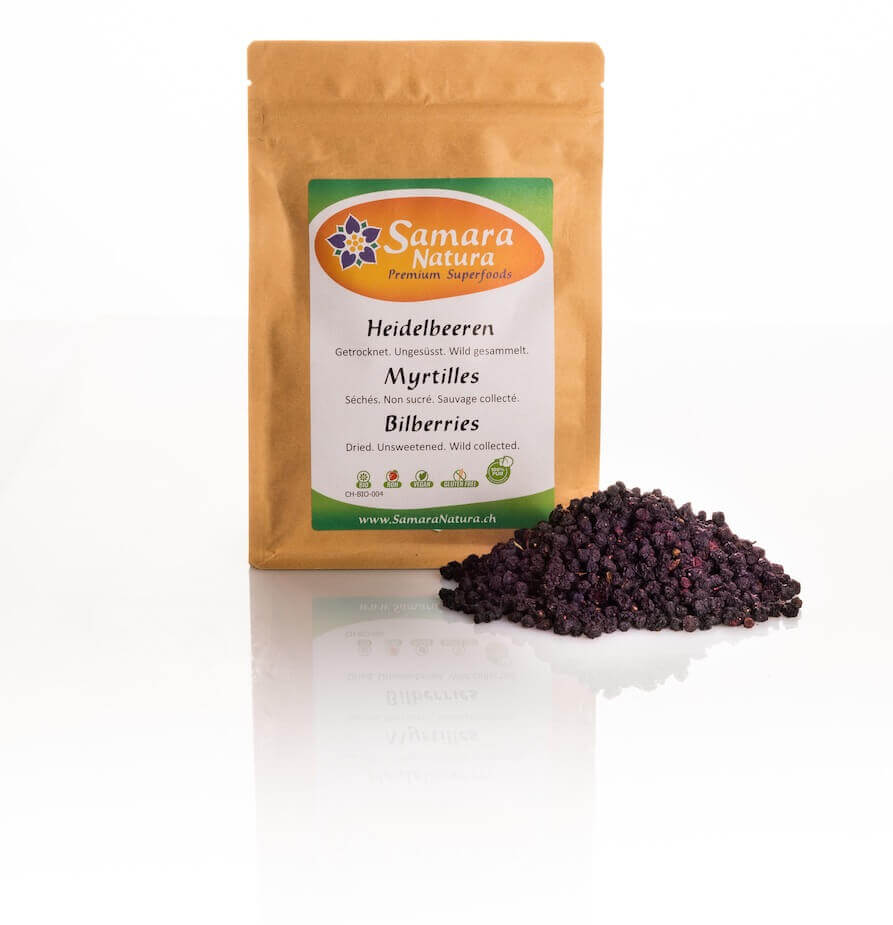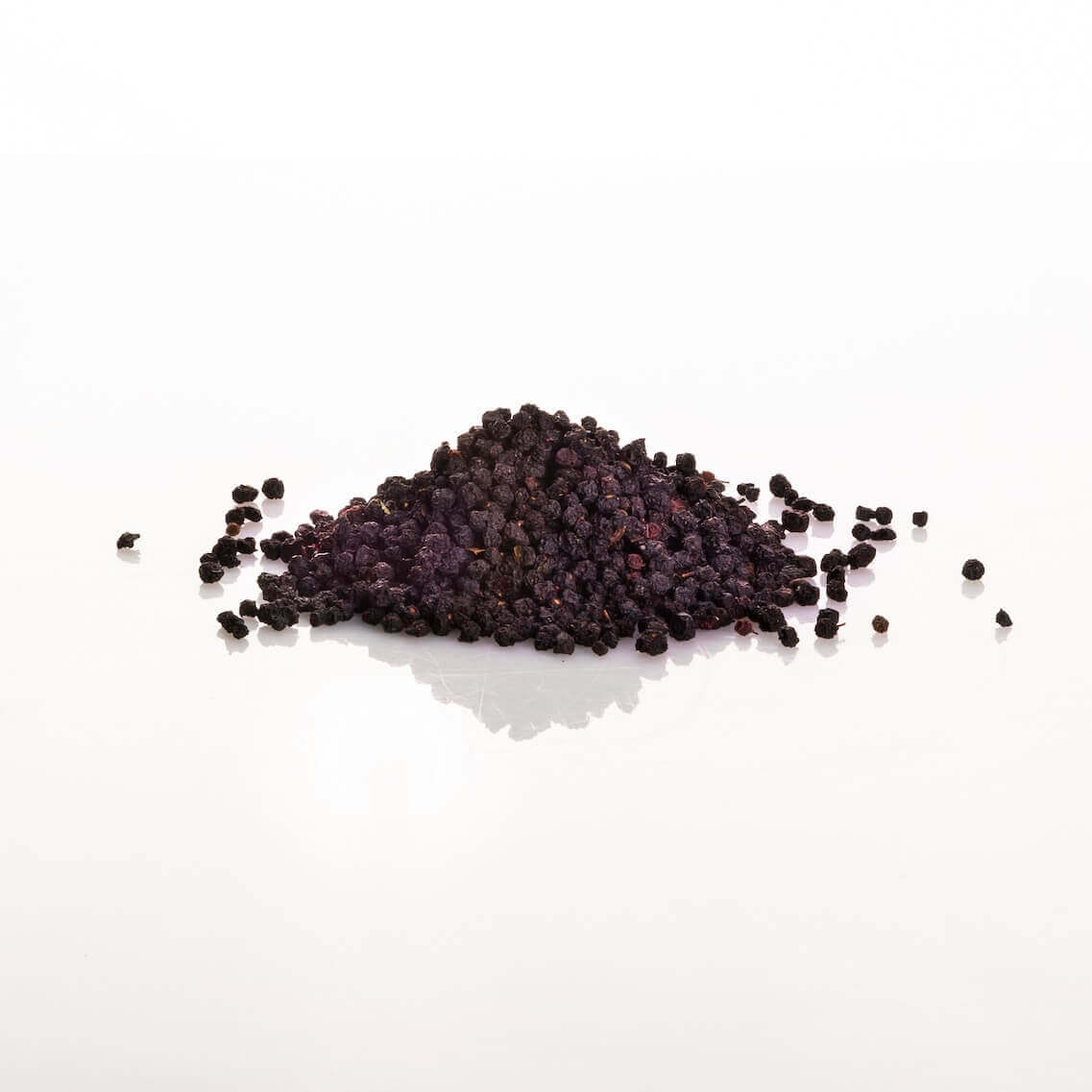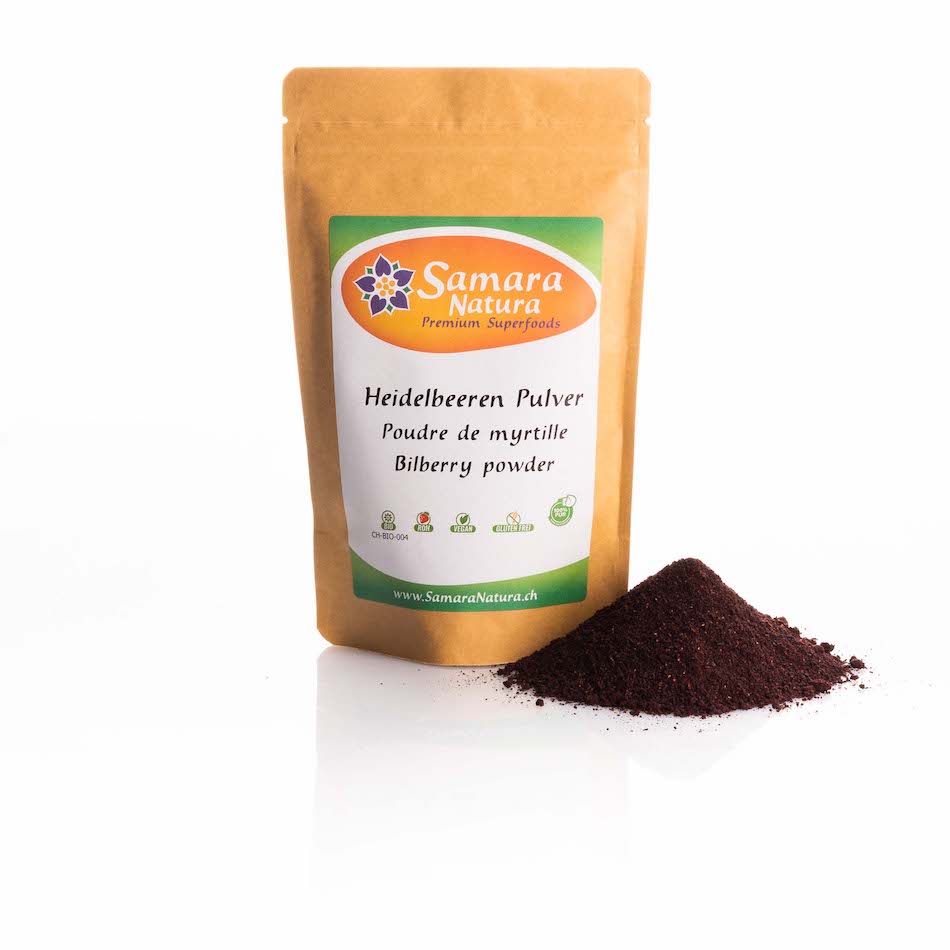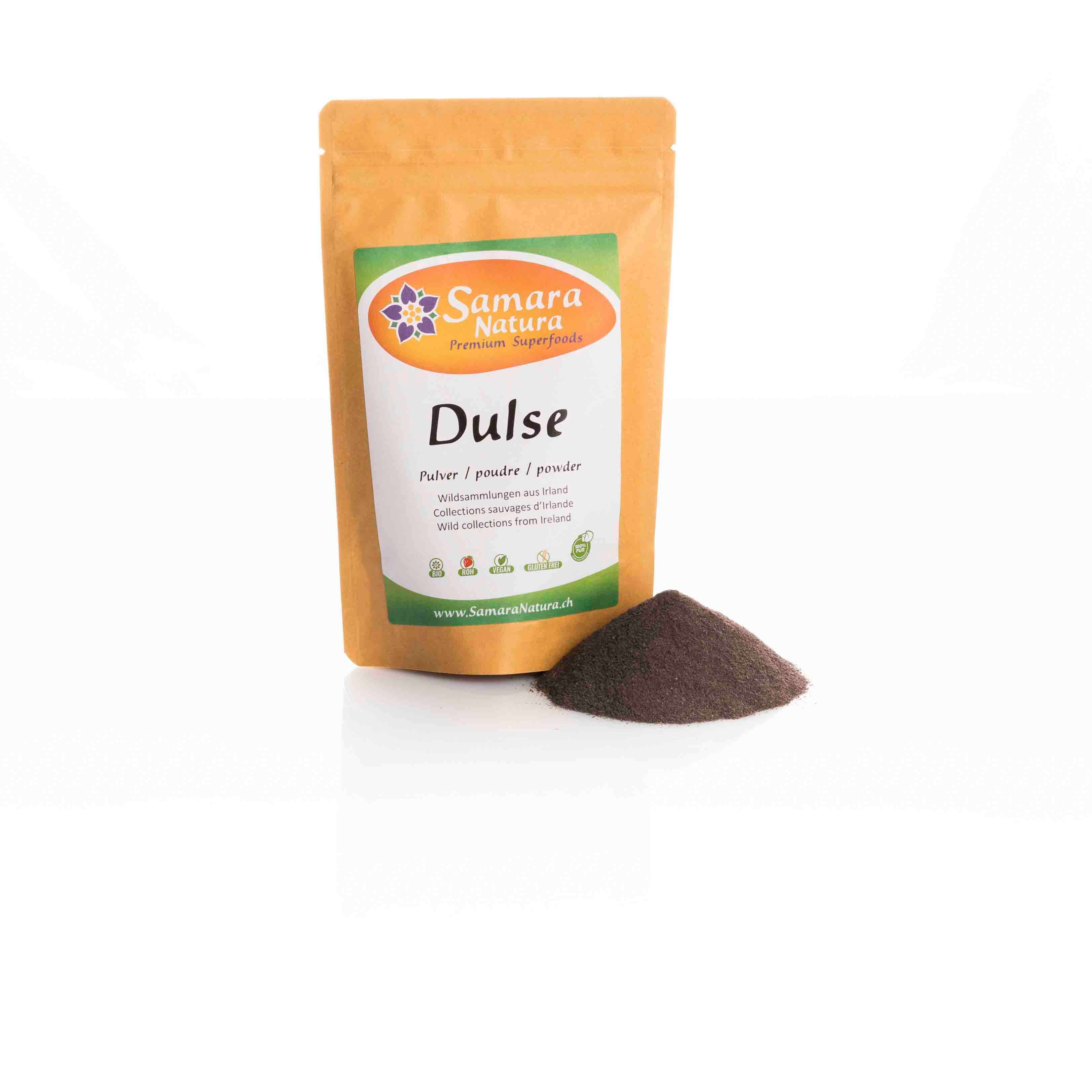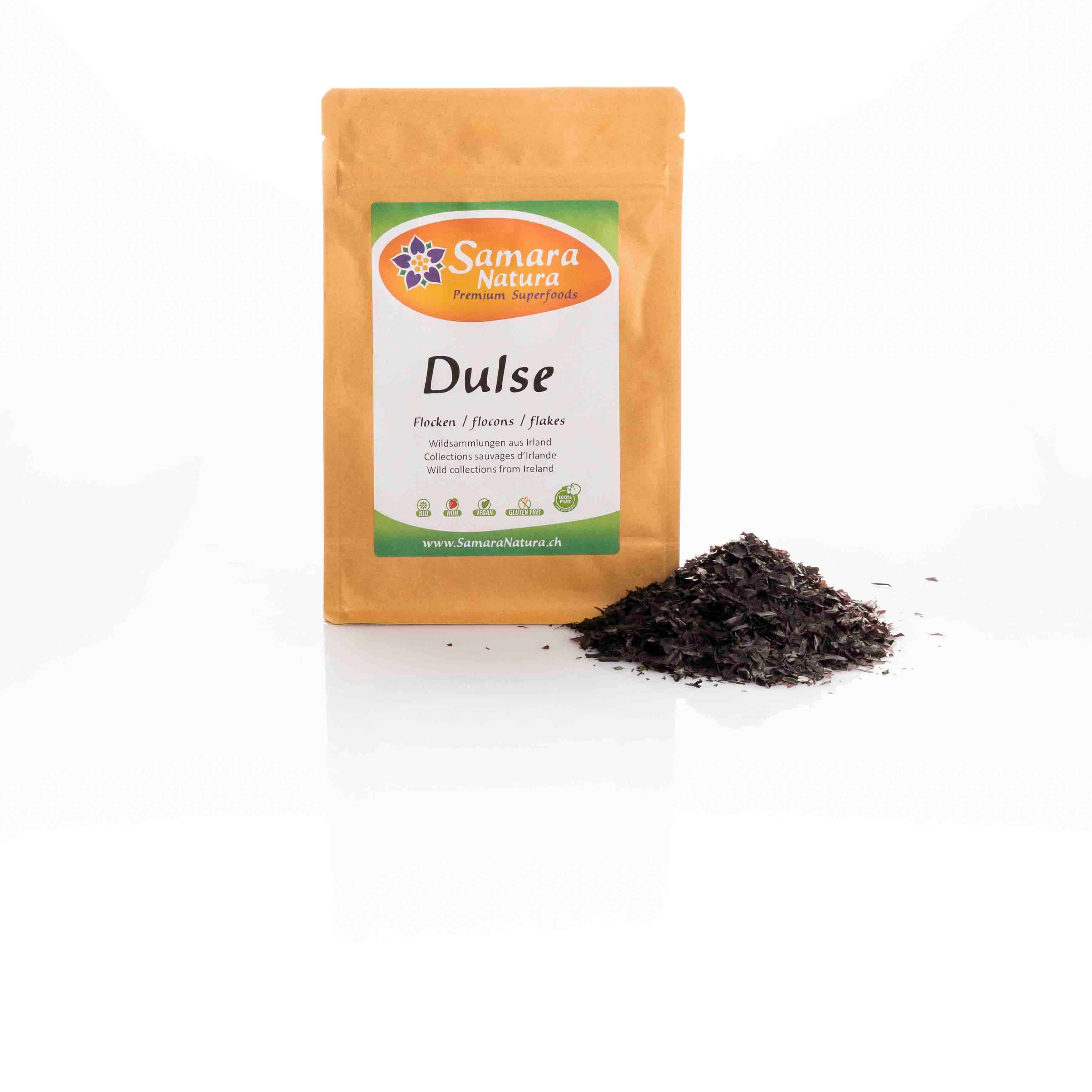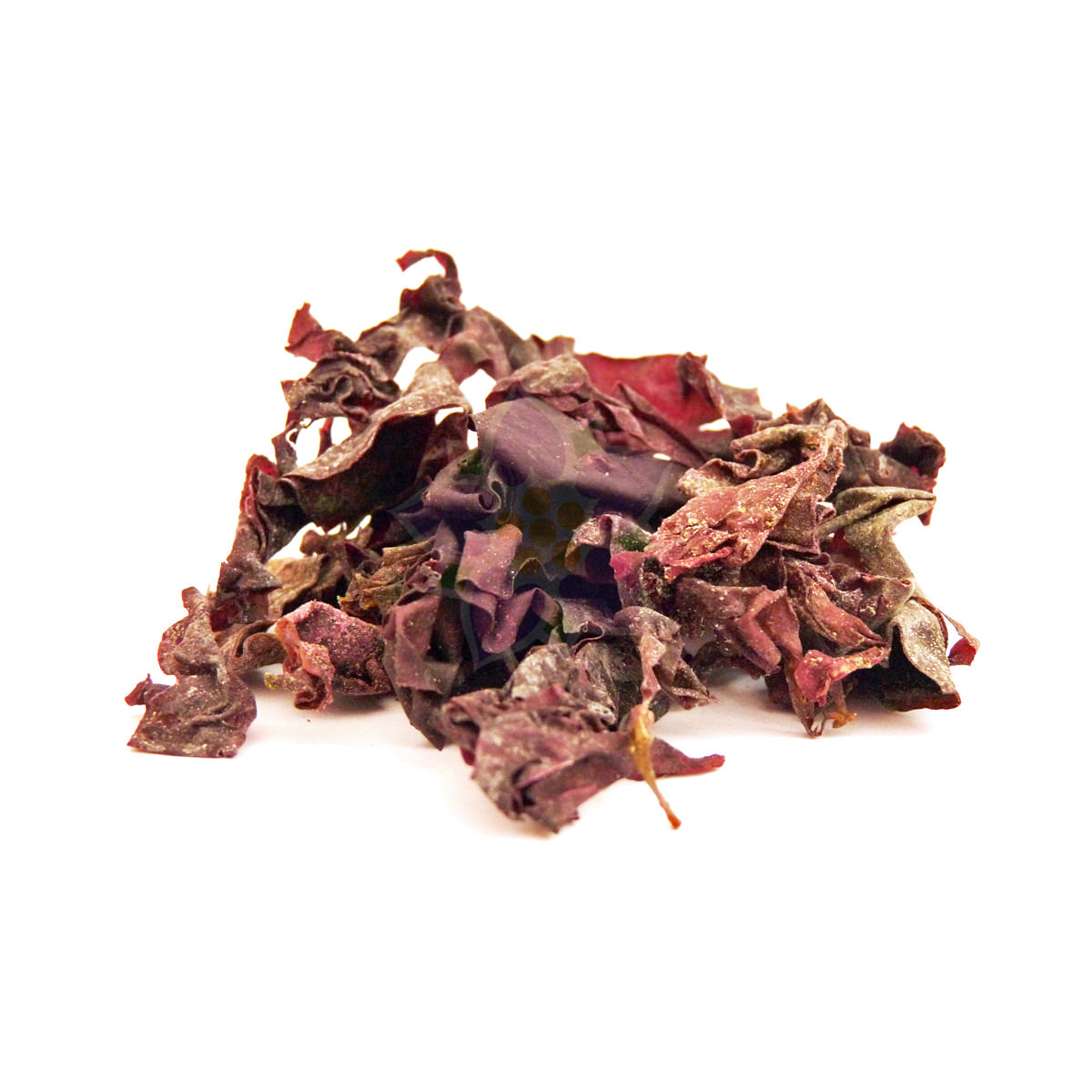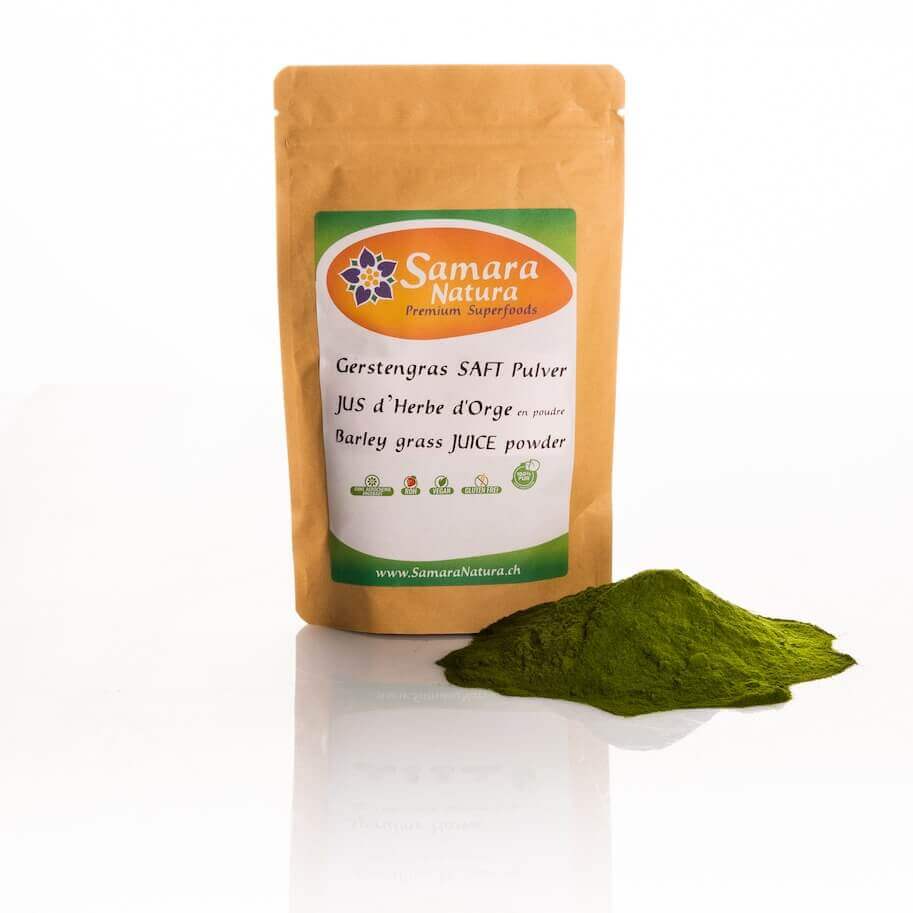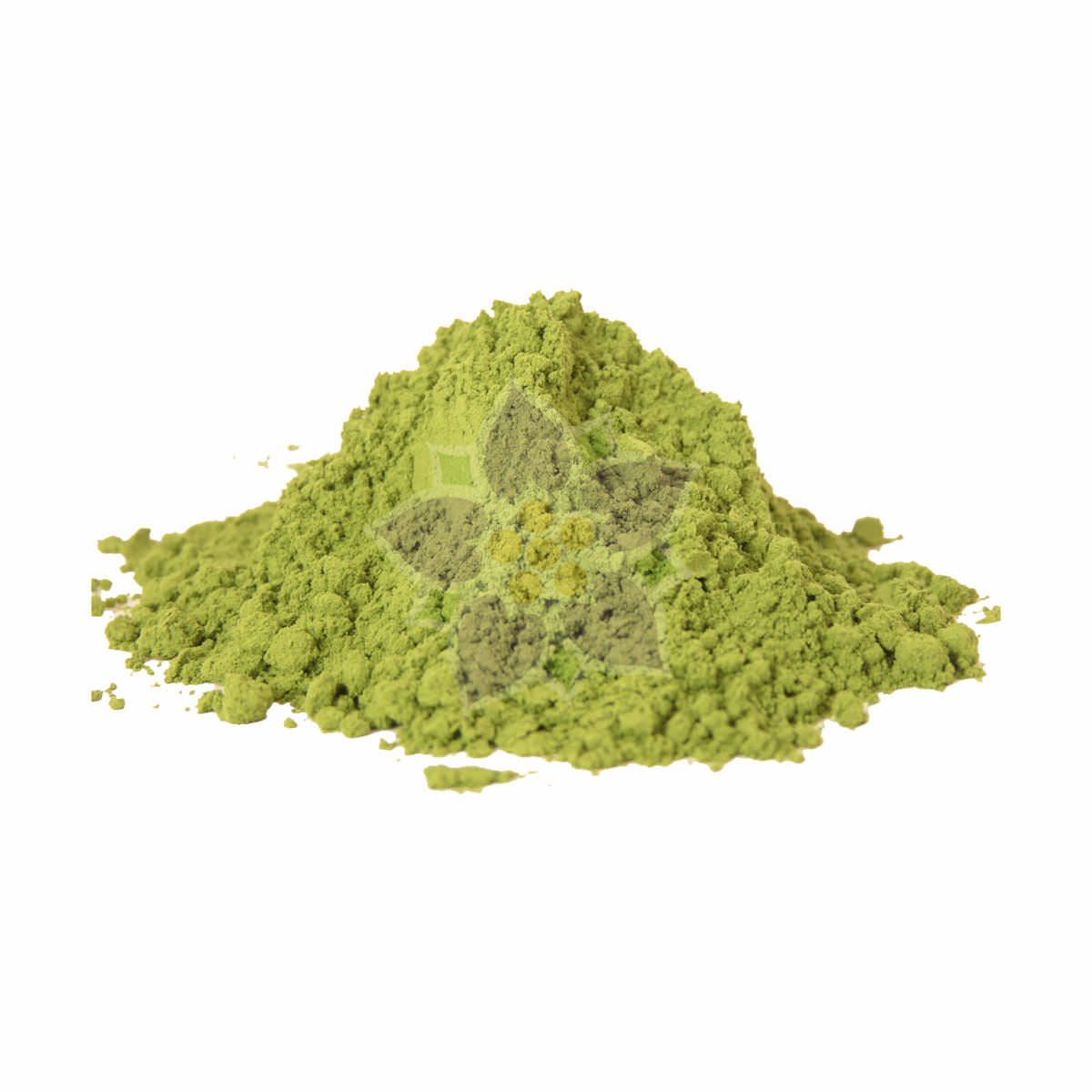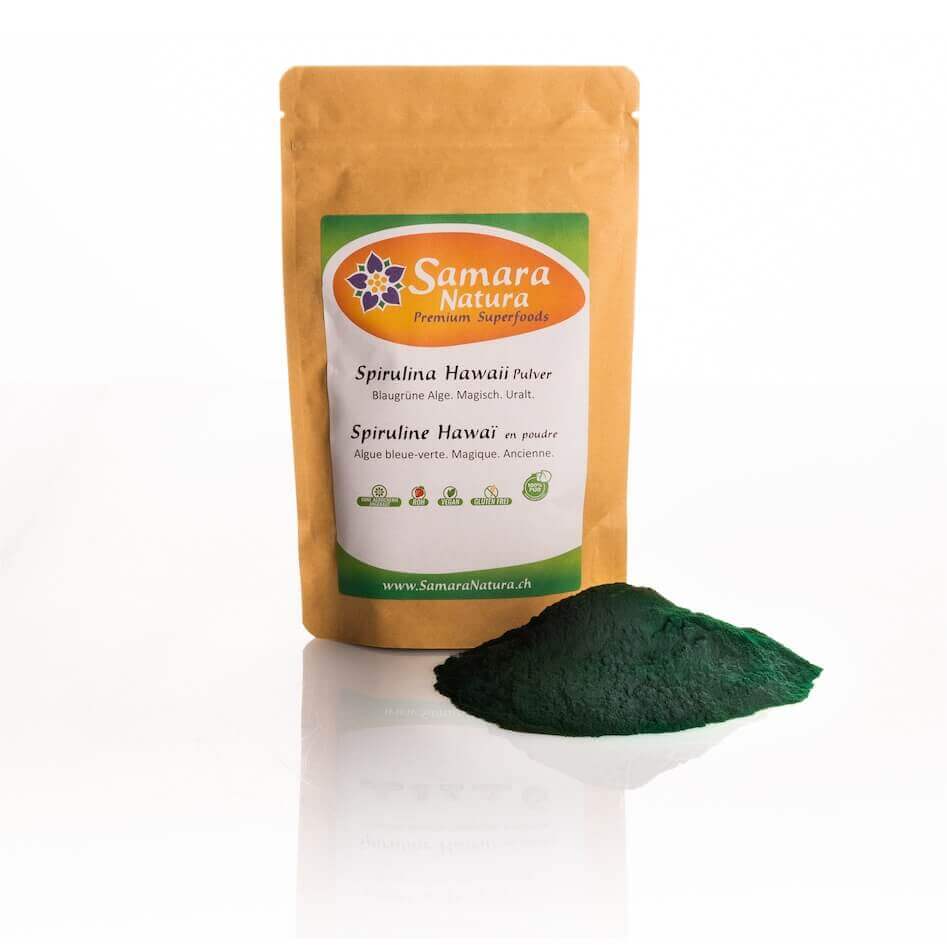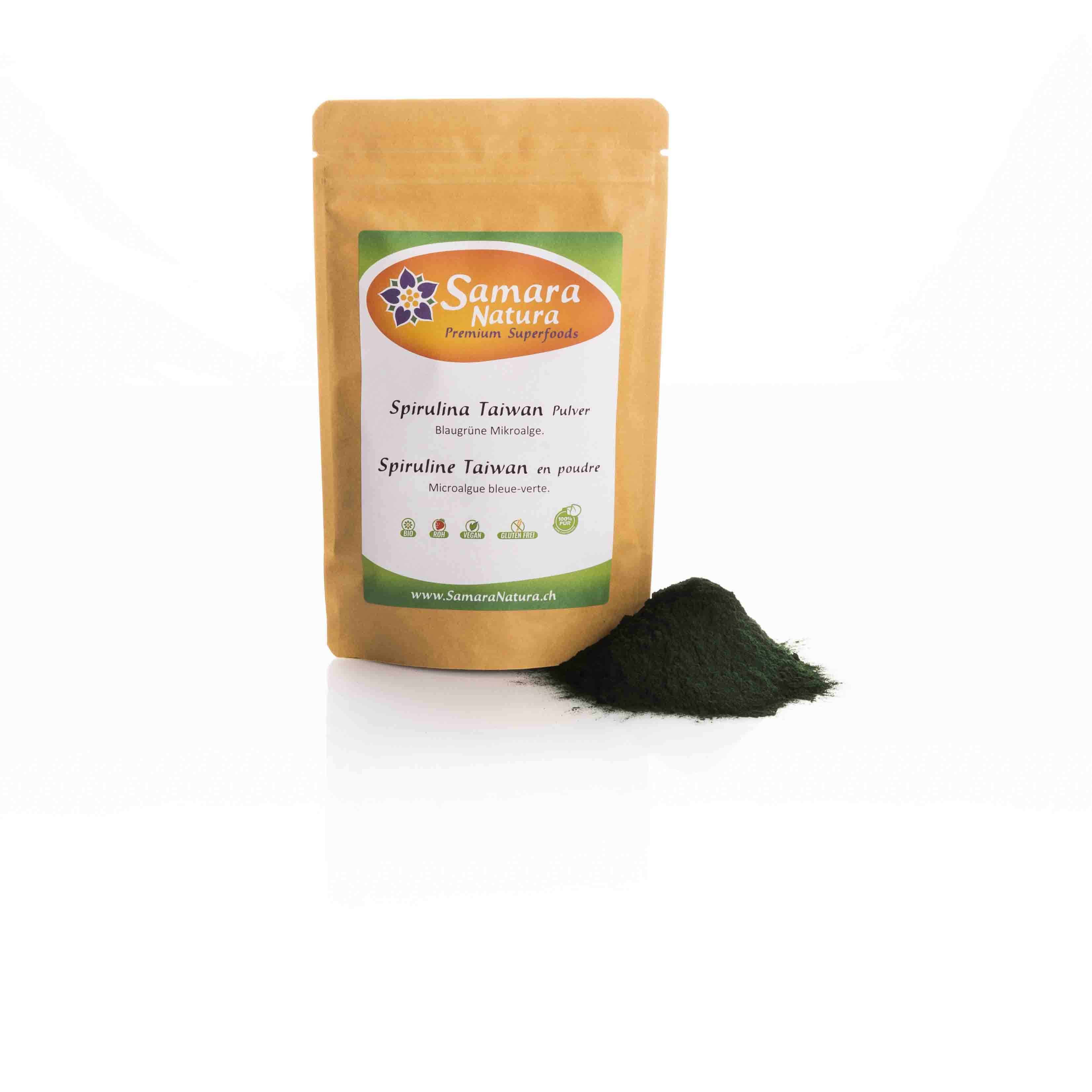| Quantity | Unit price | Base price |
|---|---|---|
| To 2 |
CHF 19.00*
|
CHF 15.20* / 100 Gramm |
| From 3 |
CHF 18.05*
|
CHF 14.44* / 100 Gramm |
Available, delivery time: 1-4 days
Product information "Blueberries organic wild collection"
Wild organic blueberries - antioxidants and flavour combined
Update: Due to limited quantities we could only buy 10kg of the new harvest. The new batch of blueberries has arrived and will be packed on 19.12.2025. From then on,125g and 250g (max. 3 bags per customer) will be available again. To complement our range, we are also stocking organic blueberry powder from Bosnia.
Packed with healthy nutrients like no other fruit - a real superfruit.
Why eat dried organic blueberries from wild harvesting?
- Great snack: delicious and nutritious
- Wide range of important nutrients and particularly rich in vitamins C, E and B6 as well as iron, fibre and other vital substances such as resveratrol, zeaxanthin, lutein, anthocyanins and other polyphenolic compounds
Because they contain such a high amount of phenols, especially gallic acid, blueberries are known as "nerve protectors". According to researchers from Iran, this means that they can literally protect our brains from degeneration, neurotoxicity and oxidative stress.
Particularly for a fruit is its high iron content, which boosts energy levels by producing oxygen-rich blood cells throughout the body. In addition, dried wild blueberries contain a very high antioxidant capacity of around 50,000 µmol TE/100g (ORAC value = Oxygen Radical Absorption Capacity).
For healthy skin
Skin care products containing bilberry extract are becoming increasingly popular around the world. It has been reported that the broad spectrum of vitamins and minerals helps to restore hormonal balance, which counteracts acne. This makes blueberries an excellent home remedy for acne. Blueberries also contain resveratrol, a natural sunscreen that can tan your skin.
What makes our wild organic blueberries special?
- 100% natural, gently processed and dried (raw food quality)
- No preservatives, colourings, sweeteners or other unnatural additives
- Natural flavour: sweet and sour, fruity and very aromatic
- Dark purple colour (high quality and purity) and quite dry and crispy
Different sizes and origins
Dried organic blueberries from wild collection are very difficult to obtain. In northern countries they are also often frozen or freeze-dried. The latest batch of air-dried blueberries comes from Bosnia again and we have packed them in 125g, 250g and 1kg bags.
The difference between wild and cultivated blueberries
They look almost the same. Both are blue, round and taste great. But what are the differences between these two berries?
Wild blueberries compared to cultivated blueberries have a higher vitamin content and a much higher anthocyanin content. Blueberry has become a universal name for blue-coloured berries of the Vaccinium genus, but it is good to know the difference between cultivated blueberries (often called American blueberries or blueberries) and wild blueberries (European blueberries). While cultivated blueberries are grown in various places around the world, wild blueberries grow on small bushes mainly in the northern parts of the Northern Hemisphere.
The anthocyanins in the wild blueberry are visible to the eye as blue and red pigments in the flesh, which is juicy and bluish-purple in colour. The cultivated blueberry, on the other hand, has an almost transparent white and somewhat floury flesh.
The wild blueberry has certainly been used since the 16th century, both the dried berries and the leaves. Modern interest stems in part from the use of the fruit by British pilots during the Second World War, when pilots noticed that their night vision was better on bombing missions after eating bilberry jam.
Nowadays, only garden blueberries (American blueberries) from cultivation are available, which are simply not as good and significantly less rich in vital substances than wild blueberries.
How to integrate them into your daily diet?
Thanks to their intense, typical blueberry flavour, they are perfect as an addition to muesli, smoothies and as a dessert topping. When making smoothies, we recommend soaking the wild blueberries overnight to make them easier to blend. They also go well in yoghurt (including vegan coconut yoghurt) and honey. A real treat!
Nutritional values of wild blueberries per 100g
Energy value 1310 kJ / 310 kcal
Protein 5 g
Carbohydrates 58 g
of which sugar 37 g
Fat 6.3 g
of which saturated fatty acids 0 g
of which monounsaturated fatty acids 3.33 g
of which polyunsaturated fatty acids 2.97 g
Dietary fibre 36.4 g
Vitamin C 223 mg (278%*)
Vitamin E 14.1 mg (117%*)
Vitamin B6 0.74 mg (53%*)
Iron 5.2 mg (37%*)
All information is subject to the usual fluctuations in natural products.
*Per cent of the recommended daily intake for an adult according to the LGV.
Storage: Store in a cool, dry and dark place.
Login
